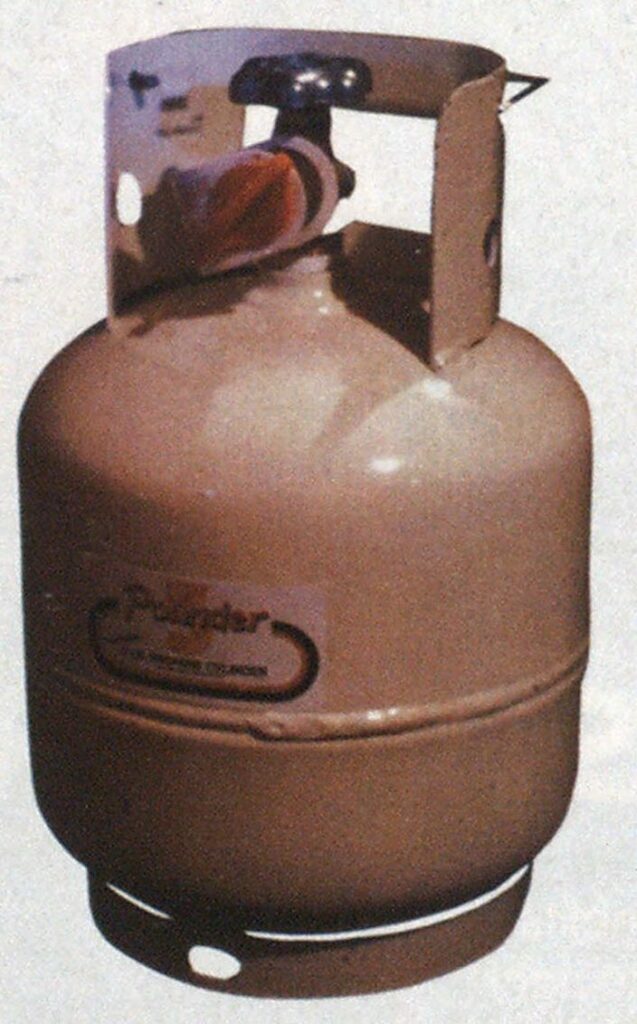
AUTO BLEVE
TRAINING NOTEBOOK
WITH COLD temperatures not far away, the routine vehicle emergencies we’ve been responding to all summer long will take on some new dangers.
INCIDENT
The call comes in as a truck fire in the parking lot at a northside manufacturing firm. You are the officer on this single, three-man engine company, just dispatched to what appears to be a routine vehicle fire.
Upon arrival, you notice a fully involved engine compartment fire in a full-sized pickup truck. You order an upwind approach, call for the booster line, radio the scene conditions to dispatch, and don SCBA to assist the firefighter with the booster line.
Using the accepted extinguishing procedures for engine compartment fires, you attack through the wheel wells and the radiator. The stream bounces off the pavement up into the engine compartment. But the fire on one side of the engine refuses to go out. You hear a high-pitched hissing noise coming from the engine compartment in the same general area as the last persistent fire. You decide to lift the engine hood to get a better angle on this last area of fire when —BOOM —the shock wave hits immediately, knocking you and your firefighter several feet backward.
Instinctively, both you and your firefighter duck for cover as a fireball blows down to the pavement and out of the top of the engine compartment, blowing off the hood and firing engine parts in all directions like bomb shrapnel. Lying there, you start collecting your thoughts and realize that all your body parts are still intact, and you start wondering what hit you.
Good question. What are you dealing with?
THE SOURCE OF THE PROBLEM
Many of us who live in the colder climates of this country have engine block heaters that, when plugged in, allow for easier starting and quicker warm-ups during those really cold spells. There are engine block heater installations in use today that do not require a nearby electrical outlet for operation: They are propane-fired.
A five-pound cylinder may be installed to fuel the burner units found on any family car, truck, or van. These units range in size from 3,000 to 5,000 Btu’s. They are not all that common, but therein lies what is probably the greatest danger of the propane heater: You just don’t expect to find a cylinder of high-pressure, liquified flammable gas in the engine compartment.
We are taught to be cautious of vehicle trunks because people will store “anything” in there. And we expect to find propane cylinders in such vehicles as trailers and motor homes. Even vehicles equipped to run on propane have labels and vents on their exterior surface to indicate the presence of a propane fuel tank. Propane engine block heater installations, however, have no outward external indicators of their potentially deadly fuel source, nor do they require any by law.
TACTICS
If your response is quick and/or if the fire is minor, access to the propane cylinder, after the hood is open, is straightforward. You can apply water to cool the cylinder vapor space and shut off the valve easily, since the cylinder is mounted upright.
However, if you find heavy fire under the hood, there may be no way to hit the vapor space of the cylinder from outside the vehicle. Fires of this nature usually have already caused such damage that the vehicle is a total loss. If your size-up procedures indicate that this heavily involved vehicle may contain propane systems, why risk firefighters’ lives on a total loss when faced with this potential propane grenade? Retreat and isolate the area to a safe distance — approximately 100 feet —and protect your exposures.
BE WARY OF THAT CARGO TRAILER
We all should know by now that just because a cargo trailer is not placarded doesn’t mean there are no hazardous materials on board. We’re taught to check the shipping papers to identify loads of hazardous materials weighing less than 1,000 pounds.
So (back on our engine company again), we’re dispatched to a semitrailer cargo fire and upon arrival we check the shipping papers to find no haz mats listed. In fact, the contents of the trailer are listed as assorted perishable foods and consumer goods. Can’t be any problem here, right?
Then the driver walks over and mentions that the heater on board must have started the fire. You ask, “What heater?” The driver replies, “’The propane-fired heater.” “Say what!?”
It is common practice to ship temperature-sensitive perishables in semitrailers that do not have front-mounted freezer/heater units. In this case, an inside-mounted, propane-fired unit is used to stabilize the inside temperature anytime the ouside temperature drops below 40°F.
These cargo heaters can hold either single or twin 20or 25-pound cylinders. More than one cargo heater may be in use in colder climates.
While these cylinders are mounted in steel cabinets and may be packed in with cargo, thus reducing the flying missile hazard, there is a real danger of a vapor explosion due to accumulation of gas. If the relief valve opens and the escaping gas doesn’t ignite, or if the fire at the relief device is inadvertently extinguished during operations, the gas will accumulate until it finds a hot spot. The use of a combustible-gas meter during overhaul is a must when these units are known or suspected.
There’s an old saying, “Forewarned is forearmed.” Rushing in on one of these vehicle fires, throwing open the hood, and catching a mouth full of engine parts will do more than just ruin your* day: If the incident happened on Monday, the funeral may be on Wednesday.
Be skeptical and wary of all vehicle fires. Be alert to sights and sounds that don’t fit what you would normally expect to find. Just when you thought it was safe to approach and extinguish the routine vehicle fire, the rules changed. When you have nothing to gain, risk nothing. Let’s all make it to retirement.


(Photos by author.)


